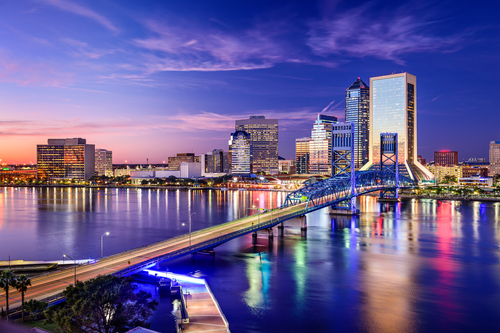 You may not be surprised to learn that you cannot copyright a skyline. However, you can certainly copyright photographs that are taken of that skyline. If someone takes your image without your permission and uses it, you may have grounds for a copyright infringement lawsuit.
You may not be surprised to learn that you cannot copyright a skyline. However, you can certainly copyright photographs that are taken of that skyline. If someone takes your image without your permission and uses it, you may have grounds for a copyright infringement lawsuit.
But copyright law is complex, so how you approach your lawsuit can make a huge difference. Here are two real cases involving skyline photographs – with opposite outcomes.
Case One: Bell v. ROI Property Group Management, LLC
The Photo in Question: A shot of the Indianapolis skyline.
The Plaintiff: An amateur photographer – a lawyer named Richard Bell.
The Defendant: A commercial property management company, ROI Property Group Management, LLC.
What Happened: The property management company took the lawyer’s photograph and used it in its entirety on their website without obtaining permission.
Why the Plaintiff Won: Richard Bell not only won, he won big: $150,000. Why such a large award? Because he was able to prove willful infringement by ROI, showing the court that this was actually the second time they had used his photo without permission. They even marked the image with a false copyright notice. Add that to the fact that the defendant was found to be uncooperative, and Mr. Bell was awarded the maximum amount possible.
Case Two: Maule v. Anheuser-Busch, LLC
The Photo in Question: A landscape shot of Center City Philadelphia that Mr. Maule digitally altered to include two buildings that hadn’t even been created yet (one never was).
The Plaintiff: A professional photographer named Bradley Maule.
The Defendant: Anheuser-Busch, LLC.
What Happened: One day, Mr. Maule noticed a neon sign that matched the outline of the skyline in his picture – the one that didn’t actually exist because he digitally created part of it. He used the fact that they had included his digital alterations as the centerpiece of his copyright infringement argument, and Anheuser-Busch even conceded that his photo was readily available at the time they made the neon sign.
Why the Plaintiff Lost: So, you have a clearly unique photo and a neon sign that fairly obviously copied it – intentionally or not. Why didn’t Mr. Maule win his case? Because it was deemed to not be “substantially similar” to the photo. The court pointed out the fact that the sign wasn’t detailed, had a cartoon-like style, and differed in depth, scale, highlighting, and shadows. Basically, even though the sign used Maule’s unique city skyline outline, it differed enough to stand alone.
Issues like these illustrate why it is so important to look at copyright infringement cases from every angle before filing a claim. In the first case, the actual photo was used by the Defendant, and they had done if before. Getting all the facts in the record helped the Plaintiff win a huge award. In the second case, the Defendant did not use the identical altered photo. The Plaintiff could not to see beyond a single point of similarity which resulted in him losing the case.
If you need assistance with a copyright infringement matter, you should seek the assistance of an experienced intellectual property attorney. You can reach the Marks Gray intellectual property team at 904-807-2180.